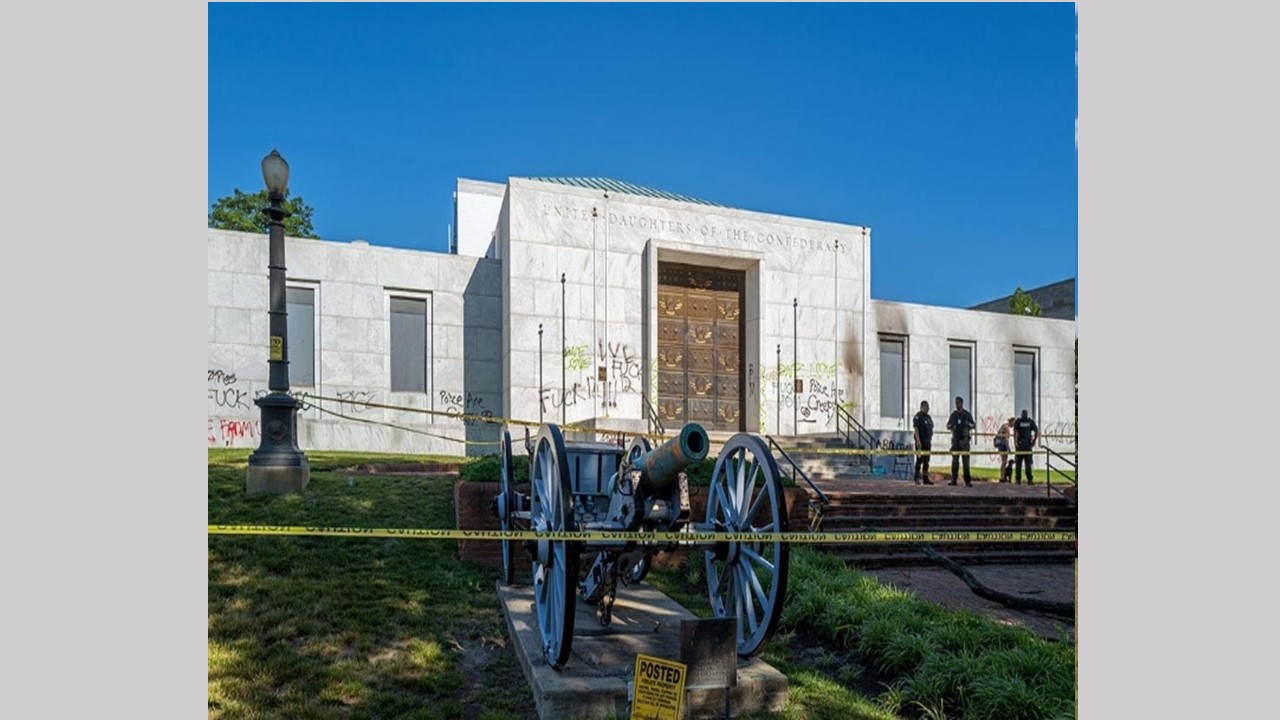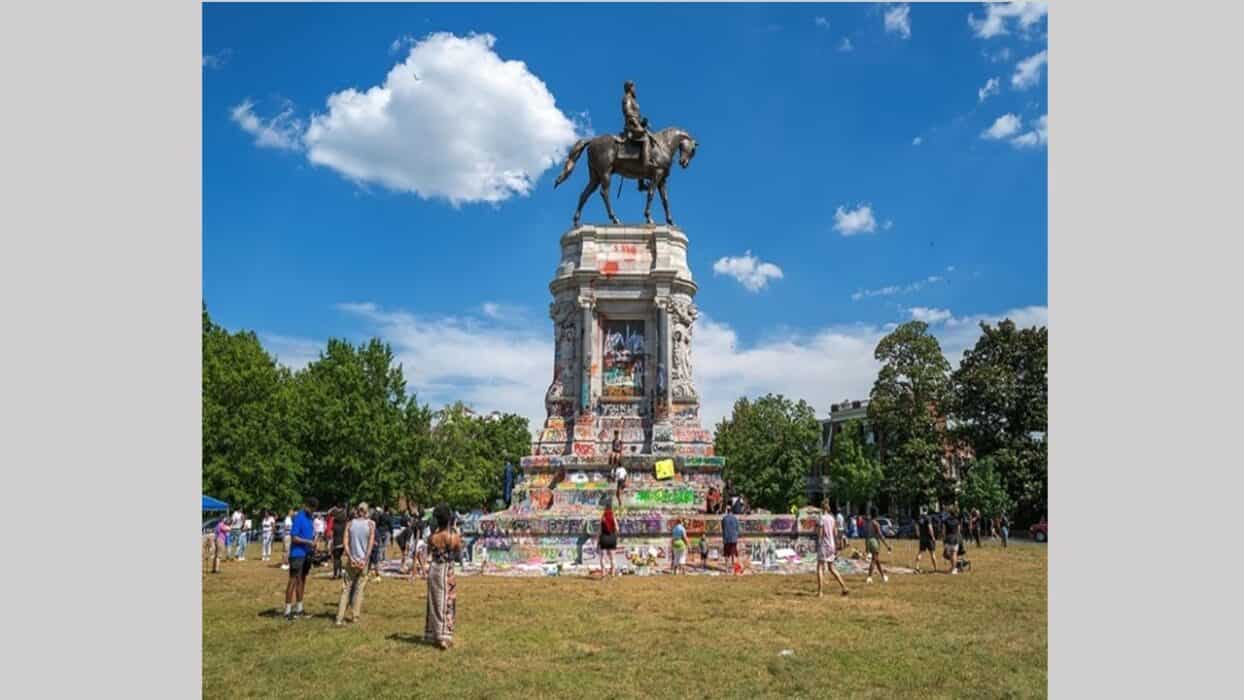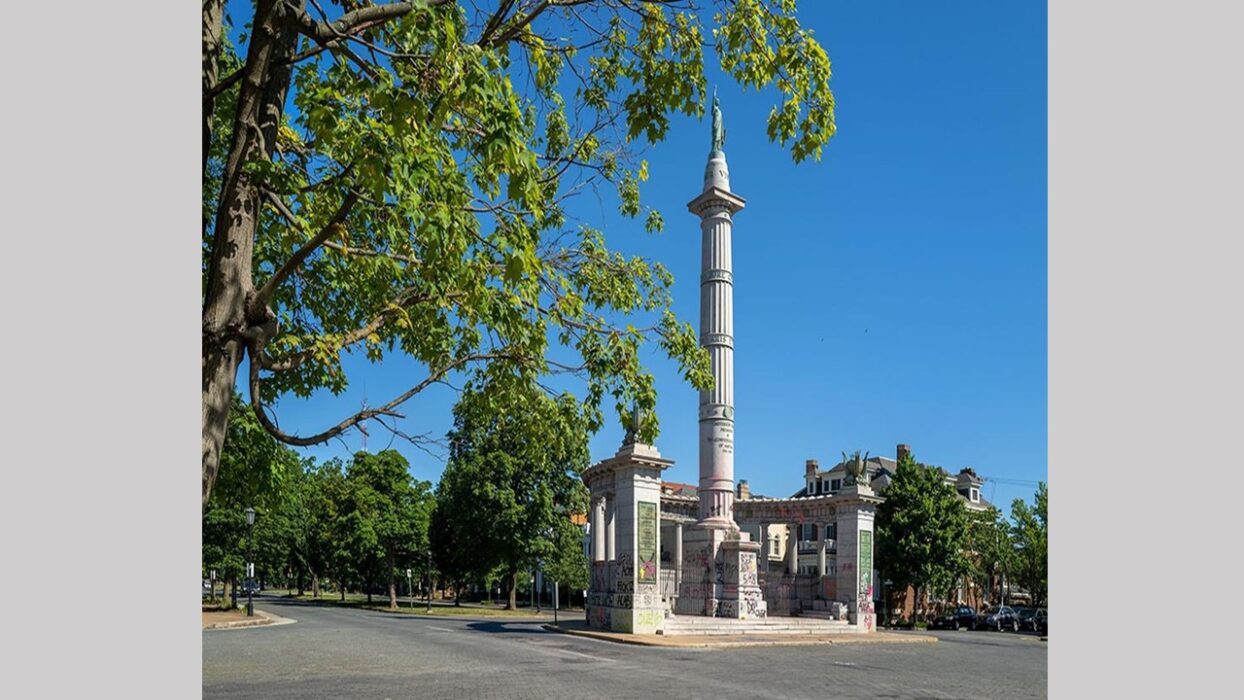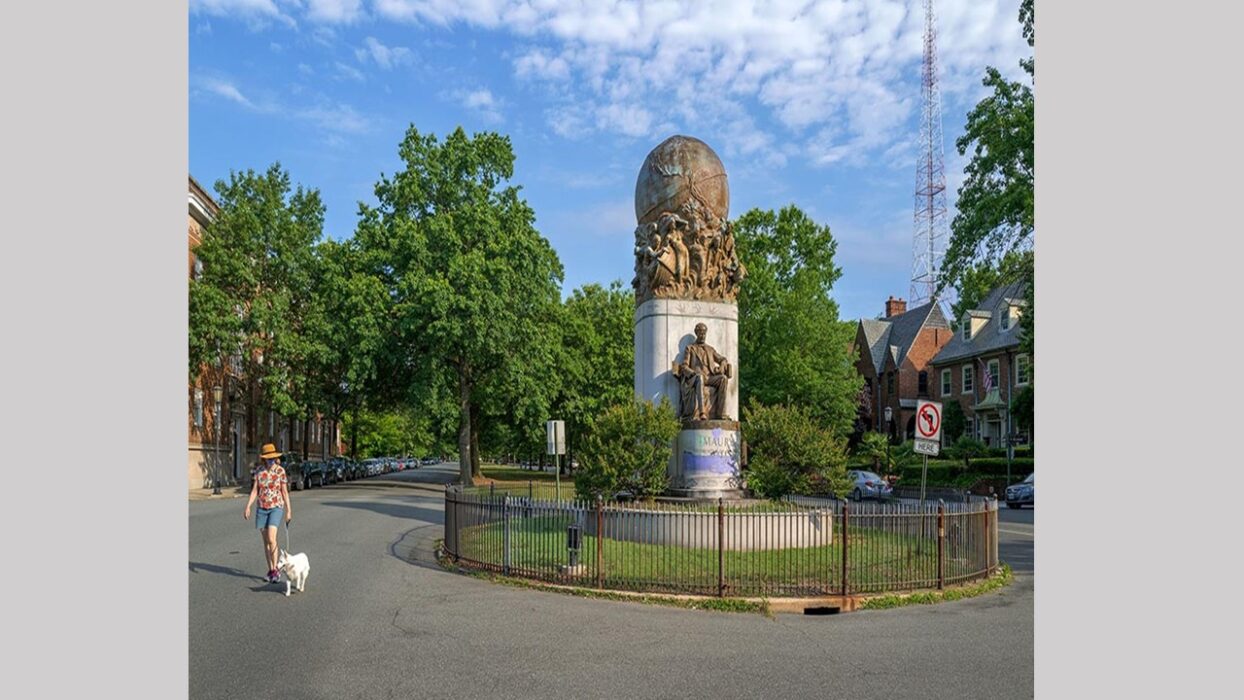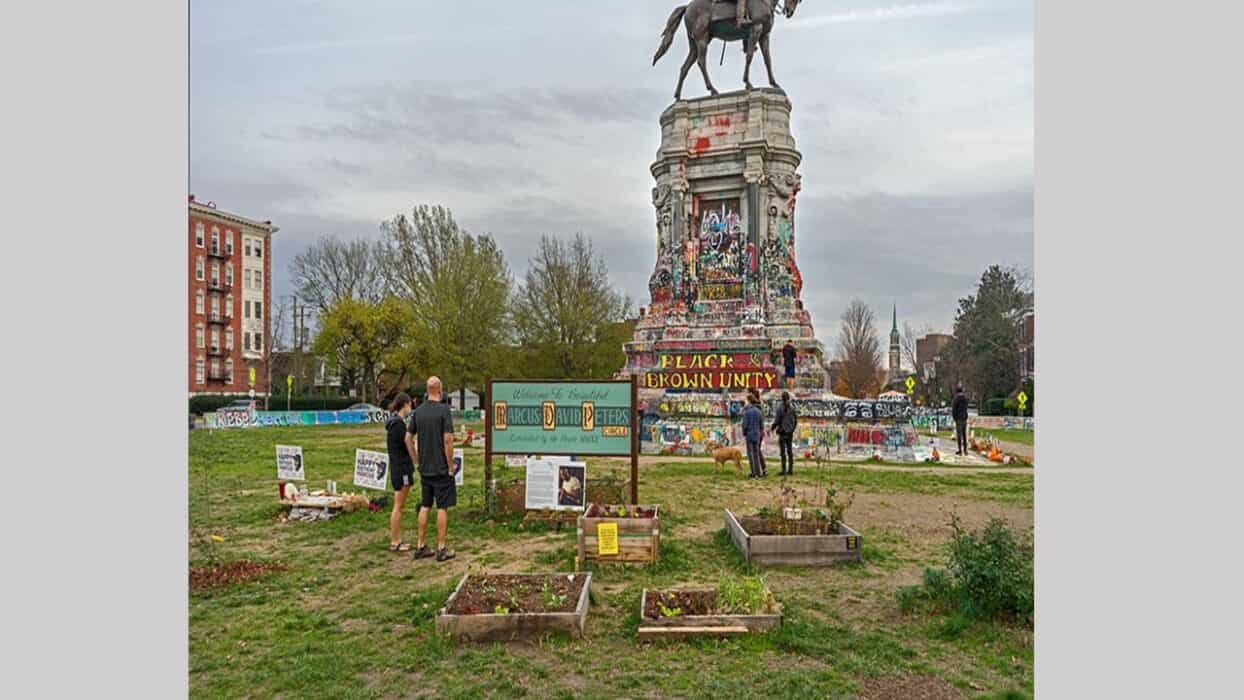A few nights before I arrived in Richmond, protesters set fire to the headquarters of the United Daughters of the Confederacy (UDC), just a few blocks off Monument Avenue.

United Daughters of the Confederacy headquarters
No other organization was more responsible for the placement of Confederate monuments in Richmond and elsewhere in the south than the UDC. Women were the leaders of the Lost Cause, motivated perhaps, by a desire to give meaning to their sacrifices – their men killed on the battlefield or humiliated in defeat – a way of life left smoldering by the predations of the hated Yankees.
They raised money for war veterans and promoted the basic tenets of the Lost Cause – that the war was about state’s rights, not the institution of slavery, and that the enslaved were loyal to their masters who in most cases treated them well. Underlying it all were vague and sentimental notions of southern honor and gentility. And to the UDC, no figure in all history was more honorable than the saintly Robert E. Lee.
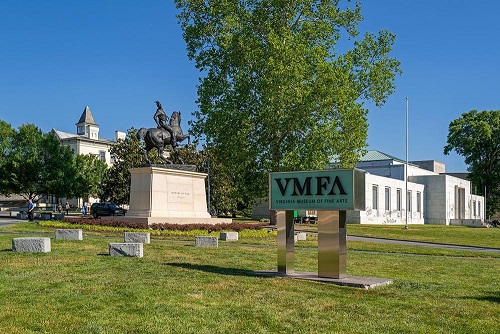
Rumors of War statue and United Daughters of the Confederacy headquarters
Yellow police tape, several security guards, and a historic Confederate cannon protected the entrance to the UDC headquarters. The white mausoleum-like building was smudged with smoke and tagged with hastily scrawled epithets.
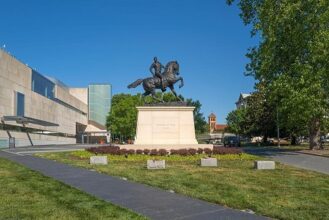
Rumors of War
Directly next door in front of the Virginia Museum of Fine Arts, stood the equestrian statue ‘Rumors of War’ by Kehinde Wiley, an African American artist most known for painting the official portrait of former president Barak Obama. Wiley’s bronze sculpture was based on the J.E.B. Stuart statue a mile away at the eastern end of Monument Avenue. But instead of a haughty general gazing into the distance, a young contemporary Black man sits astride a rearing horse with an air of insouciance.
Wiley said at the unveiling: “I saw some extraordinary sculpture. People took a lot of time to make something powerful. Beautiful. Elegant. Menacing,” he said. “We can do better.”
Now, he said, is a time to appropriate the images of the past and update them for a new era. “There’s something moving in the culture. There something changing in the winds,” he said. “I’m tired of the dysfunction; I’m tired of the strife.”
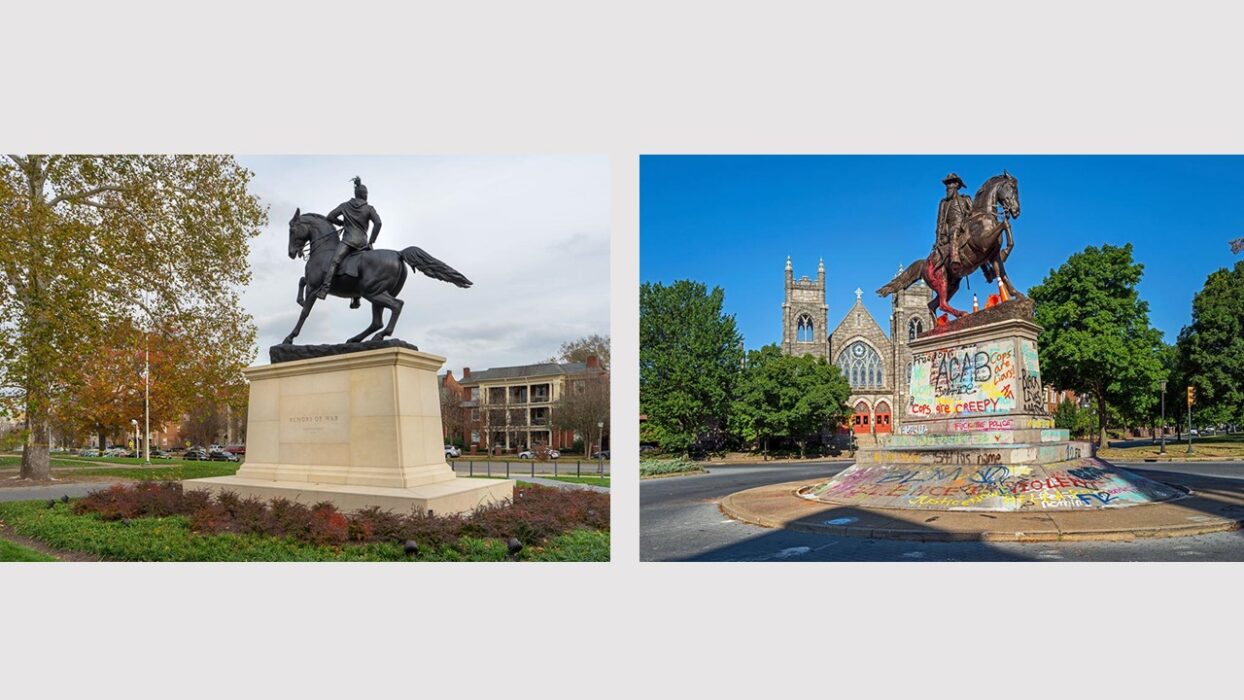
Rumors of War (left); J.E.B. Stuart statue (right)
Click here for the other parts of this blog series.
Born in Virginia, Brian Rose moved to New York City in 1977 where he photographed the Lower East Side of Manhattan, and later participated in a survey of the Financial District, funded by the National Endowment for the Arts. Rose has since undertaken a number of long-term projects in Europe including documenting the Berlin Wall and the Iron Curtain, the rebuilding of Berlin, and the urban landscape of Amsterdam. In response to the election of Donald Trump in 2016, Rose photographed Atlantic City, the scene of Trump’s bankrupt casinos. He published a blog about this project for the John Adams Institute, called Atlantic City, Forlorn. Click here for his book about Monument Avenue in Richmond. Rose’s images have been collected by the Museum of Modern Art and the Metropolitan Museum of Art, and he has produced nine books.
National Endowment for the Arts. Rose has since undertaken a number of long-term projects in Europe including documenting the Berlin Wall and the Iron Curtain, the rebuilding of Berlin, and the urban landscape of Amsterdam. In response to the election of Donald Trump in 2016, Rose photographed Atlantic City, the scene of Trump’s bankrupt casinos. He published a blog about this project for the John Adams Institute, called Atlantic City, Forlorn. Click here for his book about Monument Avenue in Richmond. Rose’s images have been collected by the Museum of Modern Art and the Metropolitan Museum of Art, and he has produced nine books.
